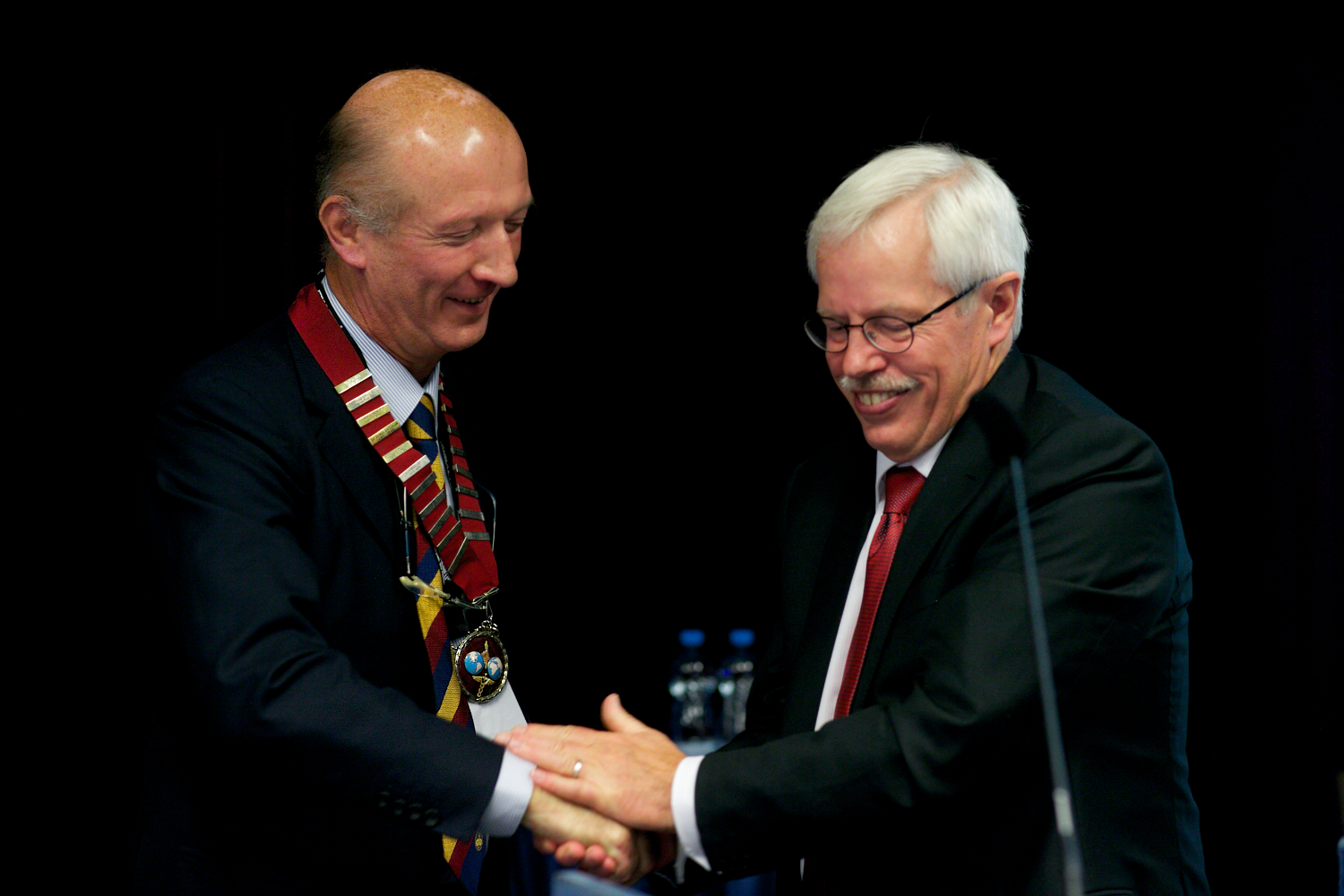SICOT e-Newsletter
Issue No. 38 - November 2011
(1).jpg) Editorial by Maurice Hinsenkamp, SICOT President
Editorial by Maurice Hinsenkamp, SICOT President
SICOT: Continuous Advancement
The SICOT 2011 XXV Triennial World Congress in Prague exceeded all of our expectations in terms of scientific excellence and attendance. This is a just reward for the important effort invested in extending the interest in SICOT meetings in different areas.
Aimed at our young colleagues, 17 Instructional Courses were organised from fundamental topics to hands-on surgical techniques. The Educational Day was devoted to the hip in all its aspects.
The most sophisticated techniques and state of the art advances within orthopaedics were highlighted by five plenary lectures and 213 invited speakers. All topics of Orthopaedic Surgery and Traumatology were covered from fundamental research to road accidents and war trauma. As in every SICOT Congress, our Trauma Committee systematically focused its interest on an anatomical region with a symposium on âFractures around the Kneeâ followed by three free paper sessions on the same topic. In total 13 symposia, 779 free oral papers and 901 e-posters were presented.
To keep pace with the advances within each subspecialty, 23 additional open sessions were offered to the Specialty Societies such as ESSKA, IFPOS, ISMISS, IHS, ESSSE/SECEC, SRS, WOC, and others. More than 3,000 participants from 94 countries attended the meeting. Among them, the top five nations represented were Japan, Russia, United Kingdom, Czech Republic, and India.
This congress was a clear demonstration of the interest in a general and truly international Orthopaedic Society. Specialists in various fields and with different expertise from all parts of the world gathered together at the same time and place. The Prague meeting illustrates in many aspects, the fundamental objectives of SICOT in terms of education, advancement of orthopaedic skills and knowledge.
Beyond the SICOT meetings, the success of our journal illustrates the important role of SICOT publications. In 2009, more than 300 papers were published to avoid the accumulation of a backlog of articles. This has had the temporary consequence of lowering the impact factor from 1.825 to 1.561 in 2010 which obviously did not alter the scientific value of the papers. Our Journal offers an exceptional international vector to the most advanced research but also remains an open forum for all those orthopaedic surgeons who have no easy access to a worldwide platform.
Apart from these two examples of SICOTâs contribution, the objectives for the following triennium will be to expand our activity and presence in two main directions.
The first will be to develop increased interaction with the national sections of SICOT around the world. To achieve this, the role of our National Representatives will be essential and, helped by the Head Office in Brussels, will provide an effective hub between the national events and SICOT and vice versa. Examples could be the promotion of national orthopaedic meetings, support to local activities in Orthopaedic Surgery, bilateral cooperation between countries and trainee exchange. This calls on every SICOT member wishing to promote an activity or a programme at local or international level to involve SICOT to facilitate and promote local orthopaedic programmes.
The other axis is complementary and concerns the role of SICOT at international level such as the World Health Organisation (WHO). Again, the interaction should go in both directions.
For the first, the importance of traffic trauma on the socioeconomic burden of societies is recognised in third place by WHO, but without taking into account all the orthopaedic trauma caused by occupational or private accidents and obviously not the degenerative orthopaedic diseases as well as paediatric orthopaedics. No action or recommendation is undertaken to improve or support orthopaedics and traumatology at large. The role of SICOT will be to refocus the priorities and the real importance of orthopaedic surgery in our societies.
Secondly, when WHO programmes are initiated in our field, SICOT as the International Orthopaedic Society has to relay WHO actions. As a concrete example, SICOT supports the Notify WHO programme related to the adverse events or contaminations resulting from musculoskeletal allograft. Our journal, International Orthopaedics, will shortly publish a review of the current situation in the world and an invitation to all orthopaedic surgeons asking them to notify adverse events related to musculoskeletal allografts. This will contribute to maintaining and improving the quality, safety and ethical approaches of these transplantations at a time when organ and tissue exchange is being internationalised.
Today, SICOT is offering many opportunities to help you meet your objectives and career goals. Do not miss out on this chance and contact your National Representative or the SICOT Head Office.

The new SICOT President, Maurice Hinsenkamp, with Immediate Past President Cody Bünger at the Closing Ceremony in Prague